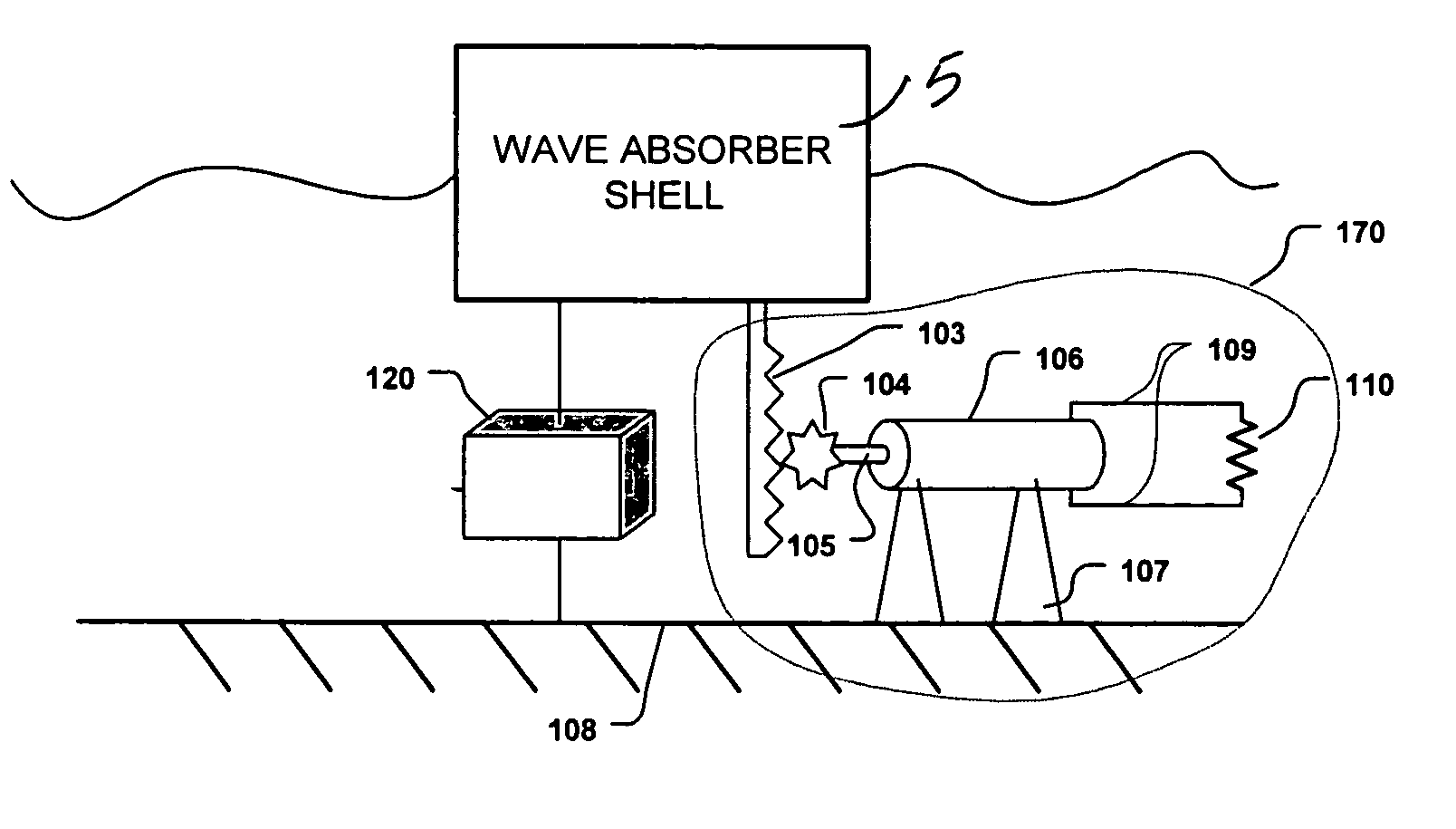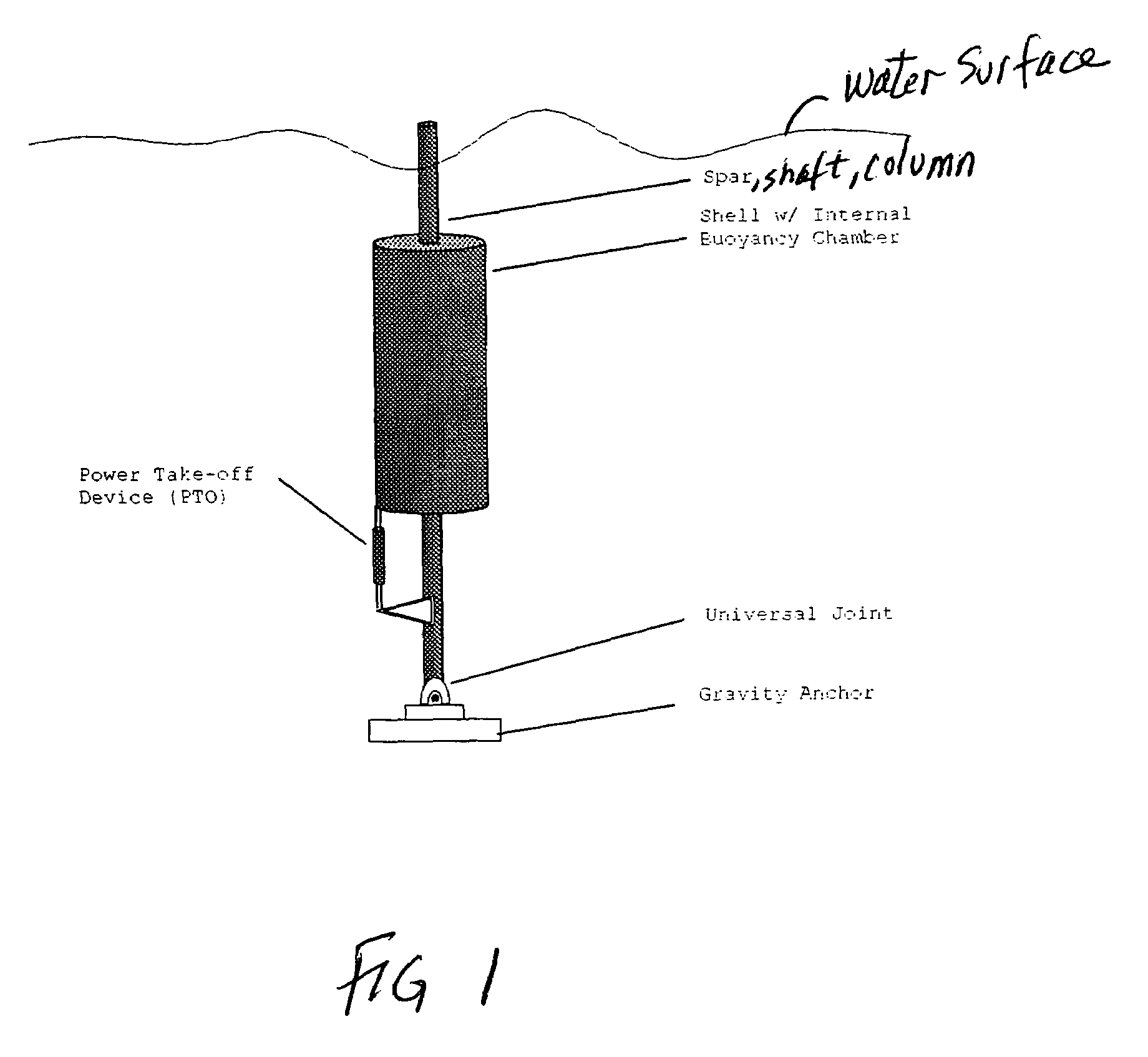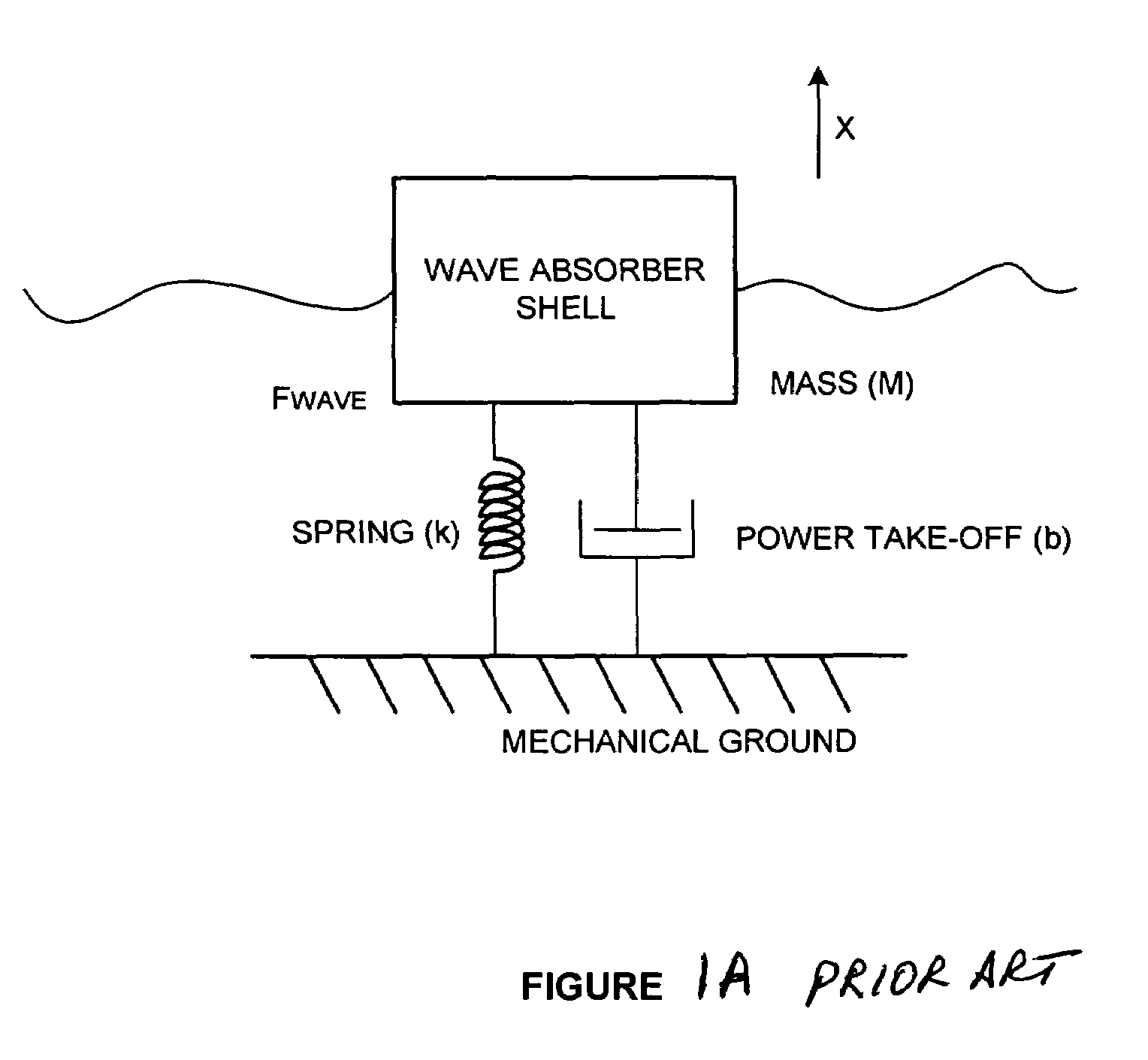Active impedance matching systems and methods for wave energy converter
a technology of active impedance matching and wave energy, applied in the direction of mechanical equipment, machines/engines, electric generator control, etc., can solve the problems of converting wave energy into usable mechanical motion and force, designing a mechanical system, and efficiently harnessing this energy, so as to achieve the effect of maximizing the efficiency of the w
- Summary
- Abstract
- Description
- Claims
- Application Information
AI Technical Summary
Benefits of technology
Problems solved by technology
Method used
Image
Examples
Embodiment Construction
[0029]FIG. 4 illustrates a system embodying the invention in which a WEC-shell 5 is coupled to a power-take-off device (PTO) 170 at whose output is produced the desired electrical energy extracted from the WEC. FIG. 4 also shows an electrical / electronic control module 120 connected between the moving shell 5 and mechanical ground (i.e., the shaft of the WEC). Control module 120 is used to perform the function of a spring corresponding to the mechanical spring of the type shown in FIG. 3. However, the function(s) performed by module 120 define significantly over the function of the spring 102 shown in FIG. 3, in that the spring 102 is a passive device, while module 120 (as discussed below) is an active device, programmed to control when and how energy is supplied to the WEC-shell in order to increase the net power absorbed by the WEC from the waves and which is made available to the PTO for producing a desirable increased output voltage and current.
[0030]FIG. 5 illustrates that the m...
PUM
 Login to View More
Login to View More Abstract
Description
Claims
Application Information
 Login to View More
Login to View More - R&D
- Intellectual Property
- Life Sciences
- Materials
- Tech Scout
- Unparalleled Data Quality
- Higher Quality Content
- 60% Fewer Hallucinations
Browse by: Latest US Patents, China's latest patents, Technical Efficacy Thesaurus, Application Domain, Technology Topic, Popular Technical Reports.
© 2025 PatSnap. All rights reserved.Legal|Privacy policy|Modern Slavery Act Transparency Statement|Sitemap|About US| Contact US: help@patsnap.com



